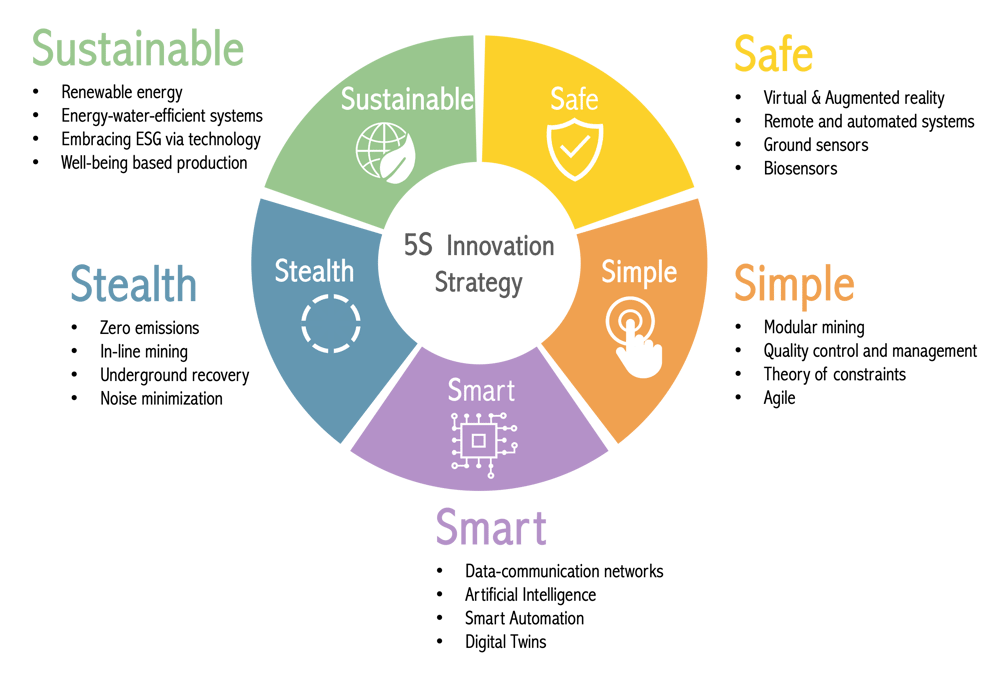The 5S Innovation Model
Nieto's new book 'The 5S Innovation Model" is aimed to help us look into the future of the minerals industry by defining current and future technology-innovation drivers that will be present in a typical geo-resource operation regardless of how far in the future.
The model introduces a clear and practical innovation strategy designed to achieve those ultimate operational conditions that will be present in “the minerals industry of the future”.
The innovation strategy presented is the result of several tech projects that the author had the opportunity to lead and successfully implement around the world. The innovation strategy is designed to be consistent with any type of mineral commodity being extracted, such as metal or nonmetal, soft-rock or hard-rock, underground or surface extractive systems.
The five ultimate mining operational conditions considered in the model were carefully defined based on current operational and technology trends, which will keep the future minerals industry efficient and productive during the following decades. The innovation strategy thus considers five ultimate operational conditions or drivers: (1) achieving maximum safety, (2) simplifying systems, (3) using smart-intelligent systems, (4) designing stealth operations, and (5) sustainable use of environmental and human resources within the operation.
The data-information-innovation cycle
As seen in the first figure above, the cyclical data-innovation process starts with data acquisition which is continuously transformed via data analytics into information, then into concept, resulting in technology solutions that eventually generate new data completing a full cycle. Each evolutionary cycle consists of 4 main phases or processes:
Analyze: Data is collected and analyzed in this first step to extract valuable information. Data analytics tools transform raw data into meaningful insights, providing a better understanding of patterns and trends.
Enhance: Once information is extracted from the data, it is further enhanced through scientific research, creating new concepts and models. These models help in understanding complex systems and identifying potential solutions to problems.
Test: The third step involves testing the concepts and models developed in the previous step. This helps to evaluate their effectiveness and identify any flaws or limitations that need to be addressed.
Solve: In the final step, new solutions are developed based on the tested concepts and models. These solutions are then adopted and integrated into the existing technology, creating new data and completing the data-innovation cycle.
The data-innovation cycle is a continuous process that drives innovation and thus progress. (Nieto, 2023)
